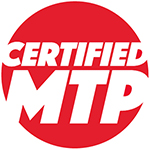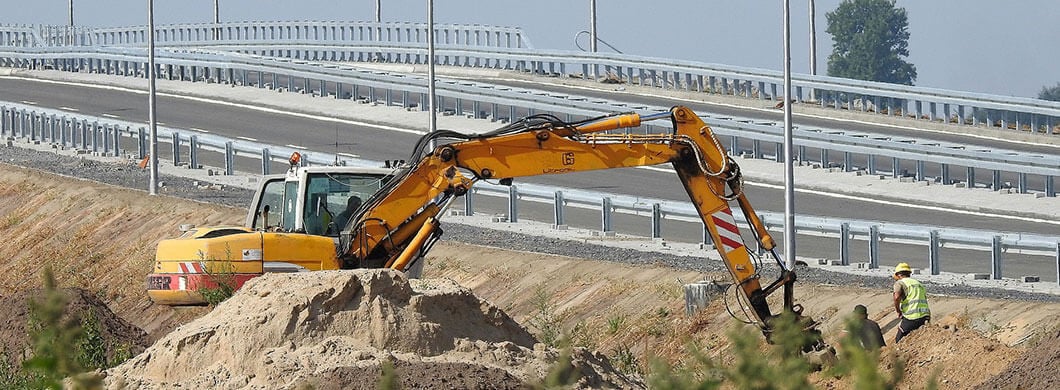Here at Certified Material Testing Products, we provide superior expertise and quality customer care, coupled with innovative new products and competitive prices, to exceed your expectations. Many people call or email us to ask about soil testing specifics.
Soil testing can be a little confusing if you’re not sure what you’re looking for. Thankfully our highly-trained customer service representatives are here to help! We’ve also compiled the following information on soil testing and why you should always test your soil before you build.
Keep Reading: The Importance of Material Testing Ovens.
Testing your soil before any type of construction can avoid potential problems and costly mistakes. Here are things to look for:
- Are the soil properties ideal for establishing and maintaining lawns, shrubs, trees, and gardens without needing to extensively modify the soil?
- Is the land on a floodplain?
- Are there soil factors that prevent or limit the soil’s ability to have a septic tank if public sewer isn’t available?
- If you plan to install a basement, will you be limited by a high water table, the depth to bedrock, surface ponding or excessive runoff, or the shrink-swell potential of subsoil?
- Do you know the slope surrounding the site? Will the site be stable? Will there be an excessive amount of water runoff?
- What about the potential erosion and landslide conditions? Consider that previous erosion may have caused gullies or limited the depth of the topsoil. These things require leveling and filling. Erosion can give you a clue about the stability of your soil on a slope that’s uphill from the house.
If you need to purchase any materials testing equipment to replace or add to your lab supplies, shop at Certified Materials Testing Products for your one-stop shop for all your testing products. We have the knowledge and equipment to back you up when you need it most. Start shopping online with us today and find exactly what you are looking for. Contact us now to have any of your questions or concerns answered
Soil Tests: A Foundation for Construction and Agriculture
Soil testing is an essential practice in both construction and agriculture, serving as the foundation for understanding the properties and capabilities of soil in various applications. This comprehensive 800-word overview discusses the importance, types, methods, and challenges of soil testing.
1. Importance of Soil Tests
– Construction: Determines the suitability of soil for construction projects, ensuring structural stability and longevity.
– Agriculture: Assists in determining soil health and fertility, essential for crop production and sustainable farming practices.
– Environmental Assessment: Identifies potential contaminants and environmental risks, aiding in land management and conservation efforts.
2. Types of Soil Tests
– Physical Testing: Includes particle size analysis, moisture content, and density tests to understand the soil’s physical properties.
– Chemical Testing: Assesses nutrient content, pH levels, and presence of contaminants, crucial for agricultural and environmental assessments.
– Mechanical Testing: Involves evaluating the strength, compressibility, and permeability of soil, key for construction applications.
– Biological Testing: Determines the presence of organic matter and microbial activity, important in assessing soil health for agriculture.
3. Common Soil Testing Methods
– Proctor Compaction Test: Measures the optimal moisture content and maximum dry density of soil, crucial for construction projects.
– Atterberg Limits Tests: Determines the liquid, plastic, and shrinkage limits of soil, indicating its behavior under varying moisture conditions.
– pH Testing: Assesses soil acidity or alkalinity, essential for crop management and nutrient availability in agriculture.
– Permeability Test: Evaluates the rate at which water passes through soil, important for drainage and irrigation planning.
– Nutrient Analysis: Measures essential nutrients like nitrogen, phosphorus, and potassium for agricultural soil management.
4. Equipment Used in Soil Tests
– Soil Samplers: For extracting soil samples from different depths.
– Sieve Shakers: Separate soil particles for granulometric analysis.
– Hydrometers and pH Meters: Measure the density and pH of soil solutions.
– Penetrometers and Shear Vane Testers: Assess soil compaction and shear strength.
5. Standards and Specifications
– Adherence to ASTM, ISO, and other international standards ensures consistency and reliability in soil testing methods.
– Standards provide guidelines for test procedures, equipment, and result interpretation.
6. Soil Sampling and Preparation
– Accurate and representative soil sampling is critical for reliable testing outcomes.
– Preparation involves drying, grinding, and sieving soil samples to ensure uniformity for testing.
7. Applications of Soil Testing
– Building and Infrastructure Development: Guides foundation design, earthworks, and site selection.
– Agricultural Land Management: Informs fertilizer application, crop selection, and soil amendment practices.
– Environmental Monitoring: Identifies contaminated sites and guides remediation efforts.
8. Challenges in Soil Testing
– Soil variability and heterogeneity can lead to complex testing and interpretation challenges.
– Balancing cost and precision in testing, especially in large-scale agricultural or construction projects.
– Adapting to new environmental regulations and sustainability requirements in soil management.
9. Environmental and Sustainability Considerations
– Increasing emphasis on sustainable land use and soil conservation practices.
– Testing for environmental contaminants and implementing remediation strategies.
10. Advancements in Testing Techniques
– Digital and automated soil testing equipment for enhanced precision and efficiency.
– Remote sensing and GIS technologies for large-scale soil assessment and monitoring.
11. Training and Expertise Required
– Skilled technicians and soil scientists are essential for accurate test execution and interpretation.
– Continuous training is vital to keep pace with evolving testing methods and technologies.
12. Cost Implications and Budgeting
– While soil testing incurs costs, it is critical for preventing construction failures and optimizing agricultural productivity.
– Investment in quality testing equipment and expertise can lead to long-term savings and environmental benefits.
13. Future Trends in Soil Testing
– Integration of artificial intelligence and machine learning for predictive soil analysis.
– Development of more efficient and environmentally friendly testing methods and tools.
Conclusion
Soil testing is an indispensable tool in both construction and agriculture, playing a pivotal role in ensuring the suitability, safety, and productivity of soil. From physical and chemical analyses to mechanical and biological evaluations, soil testing encompasses a diverse range of techniques tailored to specific application needs.
As the demand for sustainable land use and precision agriculture grows, so does the field of soil testing, with technological advancements leading to more sophisticated and efficient testing methods. The importance of soil testing in land management, environmental conservation, and construction cannot be overstated, making it a critical component in various sectors.

